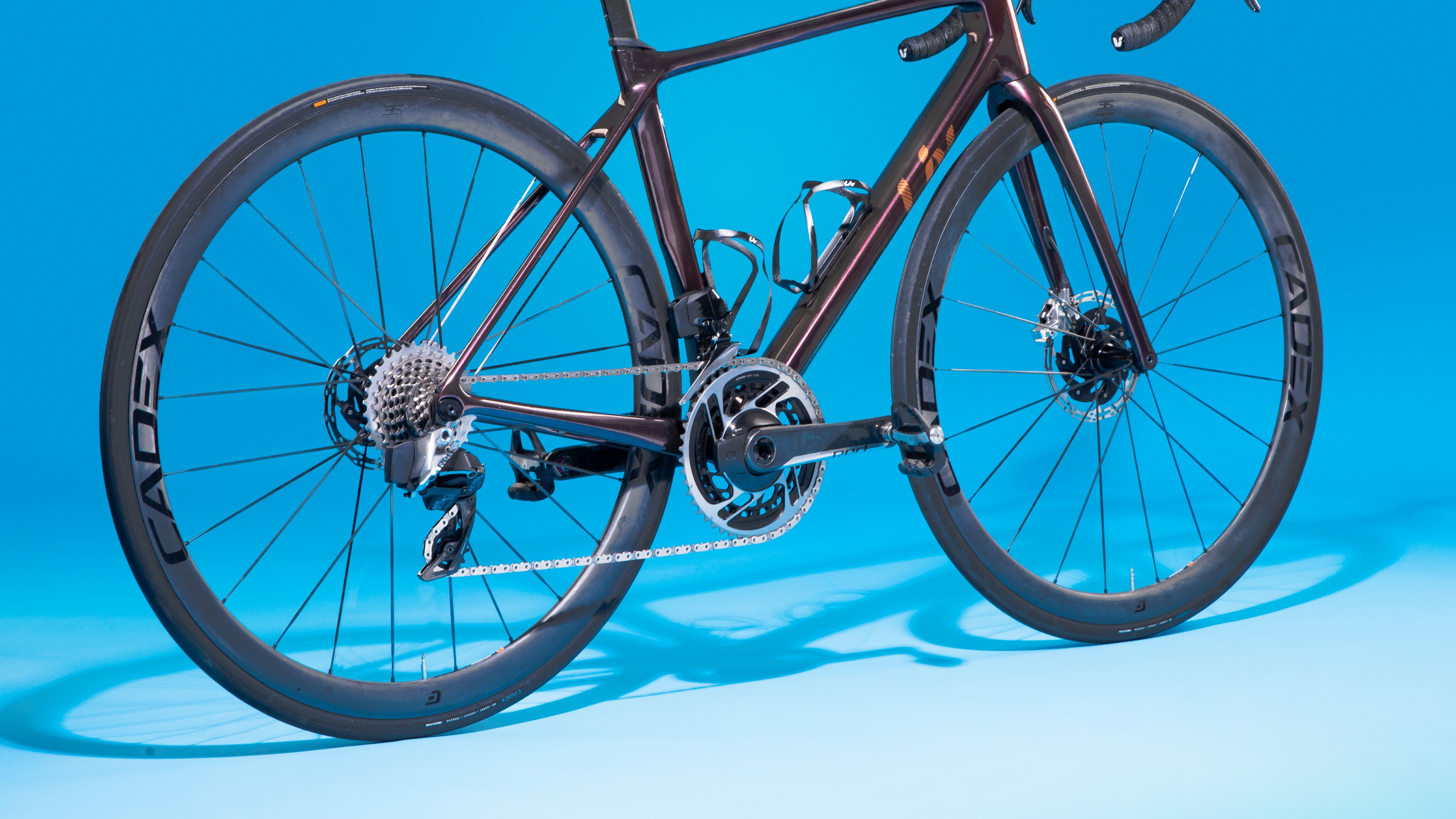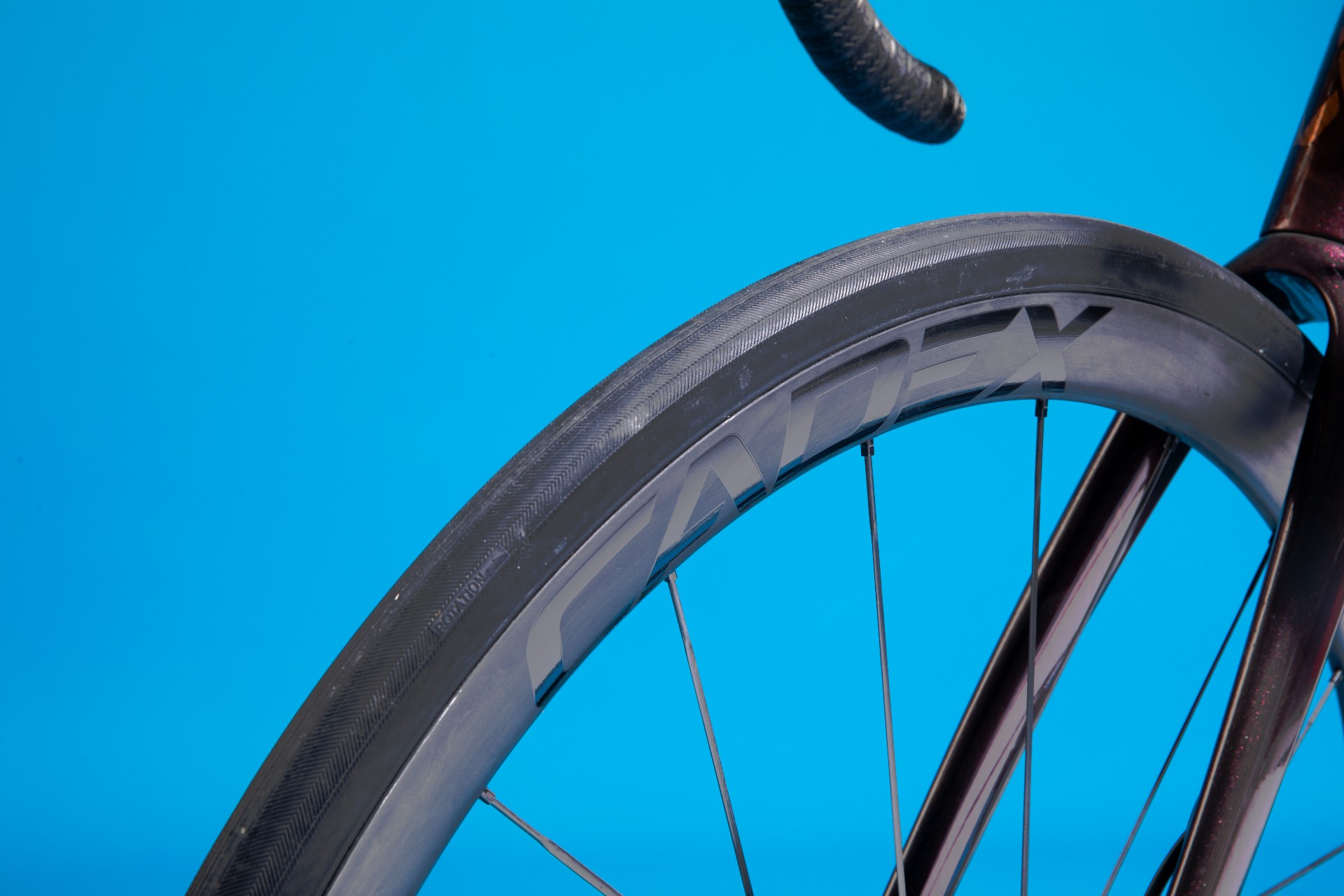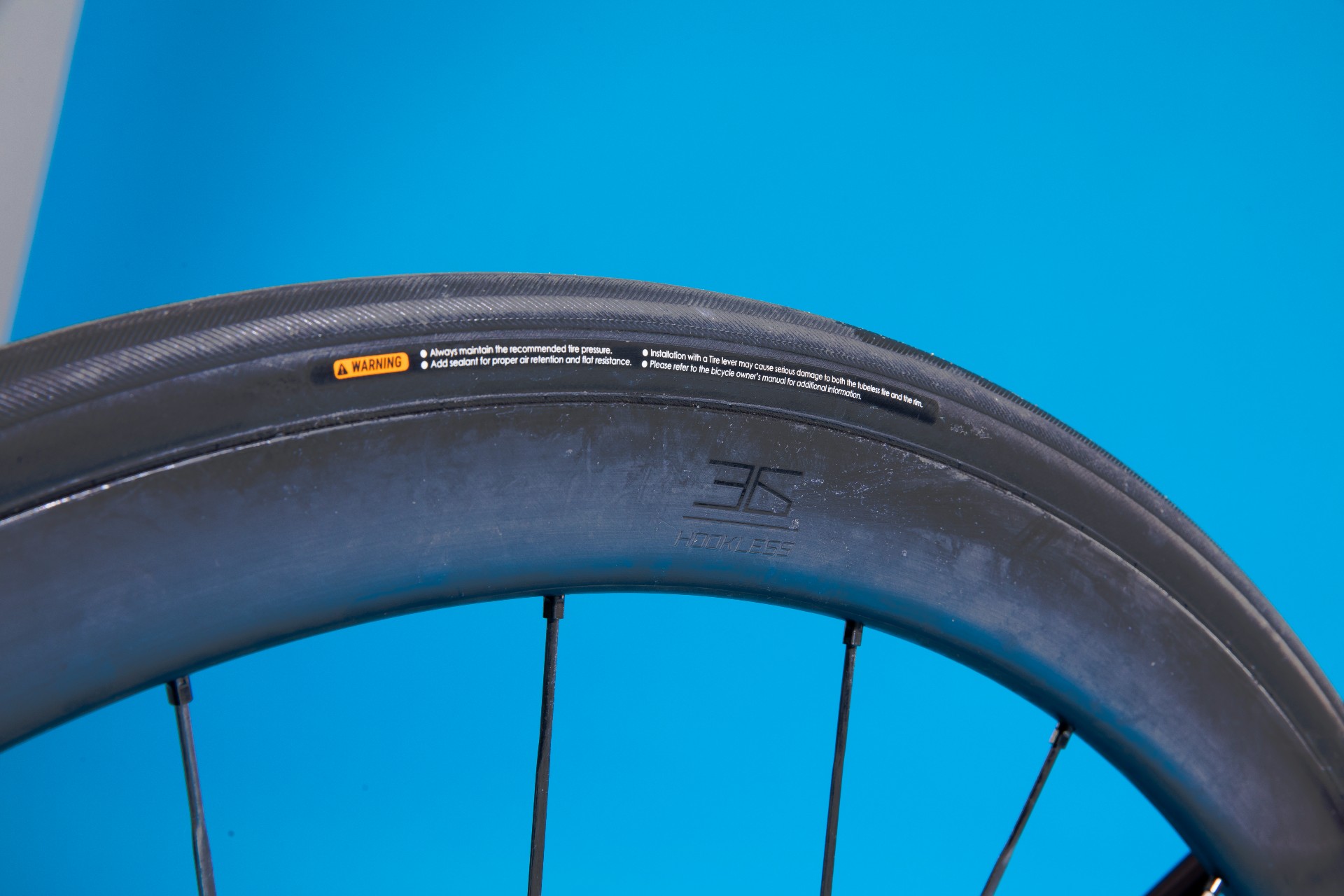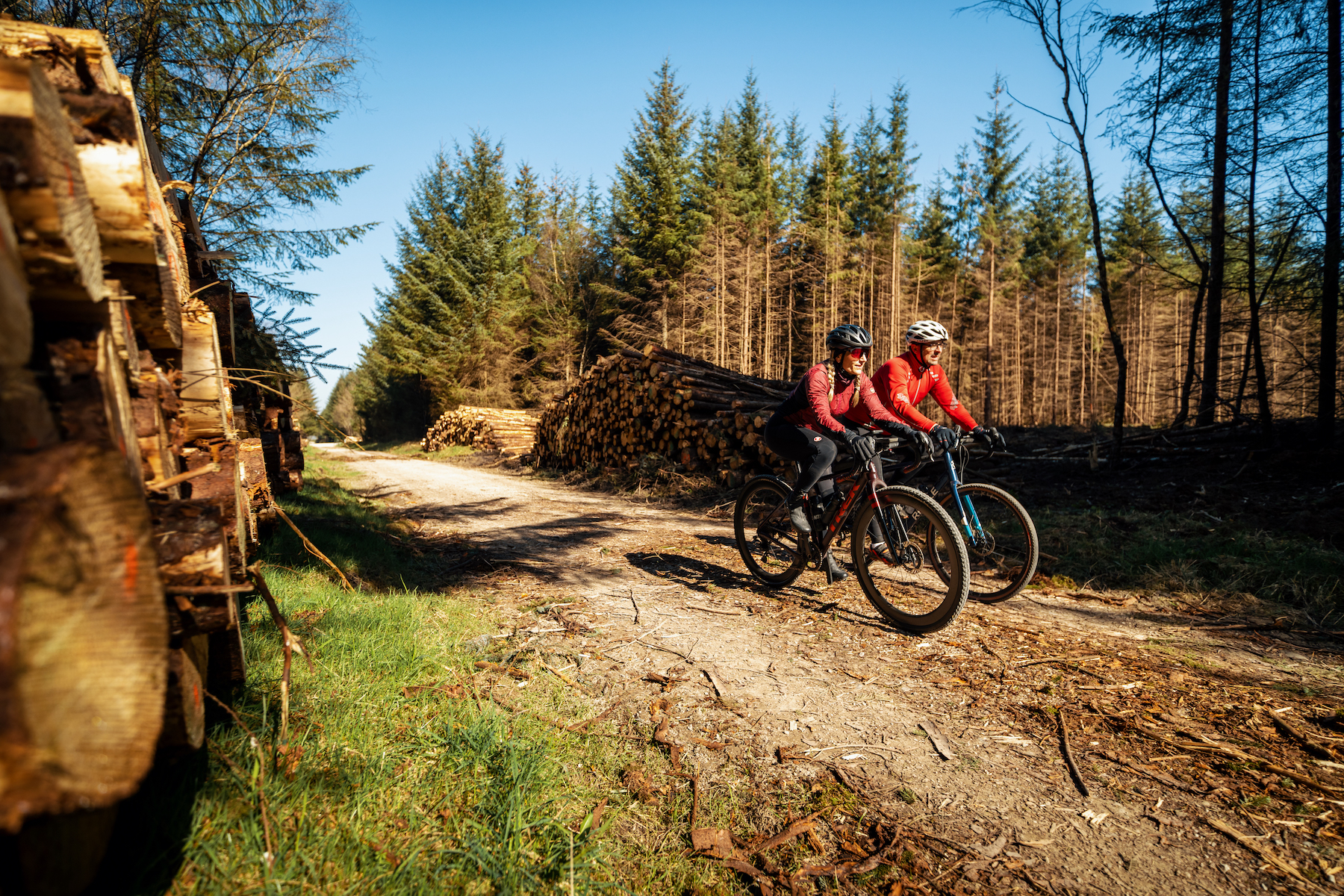Cadex 36 Disc Tubeless wheels review
A solid wheelset that accelerates and climbs well, but in a flooded market, the price just isn't compelling

The Cadex 36 wheels are both light and stiff, so if you're upgrading a lower-end wheelset, you will absolutely feel the performance uplift. However, the wheel market is extremely competitive these days. Even the mainstream brands have produced options designed to compete with the ~£1,000 offerings of smaller outfits, albeit, minus luxury features such as high-quality ceramic bearings. If you've got cash burning a hole in your pocket, you won't be disappointed. But the harsh reality is that the difference between these, and a set of hoops half the price, won't be discernible enough for most to justify the price hike.
-
+
Lighter than competition
-
+
Stiff under acceleration
-
-
Sacrifice some of the premium add-ons and you could save a lot of cash elsewhere
-
-
Hub pickup lags behind some competition
You can trust Cycling Weekly.

If you’re buying a 36mm carbon rim road bike wheelset, it’s safe to assume that weight is a key priority for you. And the offering from Cadex - Giant’s subsidiary component brand - sets its aim at just that.
Giant has gone for all the mod cons: this is a tubeless, hookless wheelset. If you’re not on board with hookless tech, which allows for a lower weight and cheaper production cost but limits tyre choice and pressure to 72psi, then you should continue your search elsewhere.
If those items are on your shopping list, Cadex offers a solid option, but one that is accompanied by a premium price tag.
Cadex 36 Disc Tubeless wheelset: construction

Cadex claims that its lay-up process reduces the overall weight of the wheels by strategically placing high-tensile strength carbon where it’s needed, dropping fractions of grams elsewhere. The overall set comes in at a claimed 1,302g, we actually got 1,300g dead-on on the scales, with valves and tape.
Cadex has opted to go for unpainted carbon, paired with a resin that offers UV resistance.
The brand is keen to blow its horn regarding the use of ‘Dynamic Balancing Lacing Technology’. This spoke lacing technique was introduced by Giant in 2015, in order to counter the unbalancing effect of pedalling forces under load.
The crossed spokes on the drive side of the rear hub are engineered at different tensions, which means that when the rider winds up an effort, the wheel remains stiff. When not under load, differing lengths in the forward-facing and rear-facing spokes ensure that the stiff-under-load rim isn't reduced to a noodle - the result being consistently firm wheels, when trundling or sprinting up to 1,700 watts (I should be so lucky).
The claimed stiffness increases are of course bolstered by the use of carbon spokes, with an aero profile. Aerodynamics don’t tend to dominate the conversation when it comes to a shallower wheel, but the truth is that the greatest aerodynamic benefit comes from swapping from a box section to a rim around this depth; anything 50mm upwards is incremental (if you won't take it from me, take it from now-Ineos race engineer, Dan Bigham), so you can expect some watt savings with a profile of this nature.
One factor that sets Cadex's wheels apart is that its carbon spokes can be trued, other examples of trueable carbon spoke wheels include Hunt's UD carbon offerings and the Campagnolo Bora Ultra WTO. The nipple heads are internal, so in this case trueing takes place from inside the rim, but it's better than nothing.
Cadex, and parent brand Giant, have gone all-in on the narrative of 'wider equals better'. These wheels use a 22.4mm internal rim. They’re designed to be set up alongside tubeless tyres, run at lower pressures, with the end goal of greater comfort, increased confidence in the corners via a larger contact patch, and potentially speed uplifts when riding on rutted roads, which make up most cyclist's regular terrain.
There are several claimed benefits to hookless rims, such as a more aerodynamic profile and grater durability, but having asked brands for numbers, these tend to be incremental (<5w). The construction method cuts costs, and these are often passed on to the consumer, enabling people to buy a lighter rim without a £2K+ outlay of the days of yore. I don't believe it's a coincidence that when the likes of Zipp (303S) and Enve (Foundation) chose to compete with the new kids on the block - like Hunt and Parcours - they went hookless. Cadex doesn't fit into that category, as these cost £2,499.98.
The hub is Cadex’s own 30-tooth ratchet system, resulting in a 12-degree engagement angle. This isn't particularly high - many of the best road bikes wheels are higher, including Zipp's 353 NSW which comes with 54 points of engagement, and Hunt's similarly specced creations boast 7.5 degrees via a leaf-sprung mechanism using multi-point pawls and 48 ratchets. The eagle-eyed tester might complain that this results in a slouchy pick-up.
Asked about the decision, Giant's David Ward said: "Some do use more teeth but considering that when you are on a road bike you aren’t stopping and starting pedalling on as regular a basis as you would do off-road then I think a 12-degree engagement angle is ideal."
The hubs use ceramic bearings - these promise to be 1.5 times smoother than Cadex's own steel bearings, which are rated ABEC level 5; the scale travels from one to nine, with higher numbers representing better tolerances. Few manufacturers creating bearings for cycling applications shout about this, but most don't go beyond ABEC 3. Cadex's choice is higher spec than most on the market, which demonstrates a focus on high quality, though it's debatable how discernible this will be to the consumer.
Asked how the bearings performed vs steel bearings, the brand told me: "As a good relatable test to show the improvement using ceramic bearings, two identical Cadex front wheels were set up in a test jig, one with steel bearings and one with ceramics. Both wheels were spun with the same controlled force. The wheel with the steel bearings came to rest after 96 revolutions and the one with the ceramic after 150."
This does sound impressive. However, it's important to remember that - within cycling applications where bearings are run at a relatively low RPM and existing in an environment requiring grease lubricants - the savings offered are quite small. The oft-quoted number from market leader CeramicSpeed is 9w if you use its bearings - over traditional bearings - in the hubs, jockey wheels and bottom bracket.
Cadex 36 Disc Tubeless wheelset: the ride

I tested the Cadex 36 wheels, initially, aboard Liv’s Langma Advanced SL Disc Red eTap road bike. I also rode the Langma Advanced Pro Disc 1 with a heavier set of Giant’s SLR-2 36 disc wheels. The Advanced Pro Disc and Advanced SL Disc framesets are separated by a handful of grams and a 5-7% stiffness increase - the two rides can’t be directly compared, but it’s possible to draw out some rudimentary comparisons based upon the two ride experiences.
The Giant SLR-2 36 wheels are still carbon, but shaving 250g off your wheelset will be noticeable. Unless there's something very wrong with your fit, then a wheelset upgrade is hands down the best investment you can make, so if you're currently on a box section alloy set of wheels, an upgrade like this will make your bike feel like a rocket.
The low weight, coupled with carbon spokes, made for the quick accelerations that the numbers would suggest. These wheels climb well and feel fast to pick up the pace, though, if you want to win a flat-out sprint a 50mm+ rim will always be your go-to.
There's no point in pretending to be something you're not, and whilst I've raced some national-level events, I'm female, 57kg (+/-1 when not, as per present, pregnant), and more of an FTP type rider than a sprinter, so I'm not nudging Giant's claimed stiffness up to 1,700w. I didn't get any flex out of the wheels, but I'm more likely to notice a wheel that's overly stiff vs one that wobbles under load. However, if your own max power output is closer to 800w than 1,500w, then you can safely put yourself in the same camp as me.
Running wider internal rim plumps out the tyres, and the comfort on offer - coupled with Cadex’s Road Race tyres - was discernible. This became a tad harsher when paired with Cycling Weekly’s control tyre, the Schwalbe Pro One TLE 25mm, but these aren’t clattery wheels.
At 36mm deep, there's no need to worry about instability in crosswinds, I had no problems there. The hub is reassuringly noisy, so if you like the click-click-whurr of a pricey wheelset, you won't be disappointed.
At 1,300g, this is a wheelset that safely enjoys a position on the lighter end of the scale, and that shone through in the ride when compared with the likes of the Giant SLR-2 36. Compared to a low spec, box-section aluminium rim, the difference would be huge. However, I didn't feel they were particularly remarkable when compared with experiences I've had on less premium wheelsets, which brings me nicely to our 'comparisons' section.
Cadex 36 Disc Tubeless wheelset: comparisons
The road market is pretty flooded at the moment, but it's rare to find two perfectly comparable wheelsets, such is the nature of the choice available.
Compare Cadex's wheels to the likes of Roval's Alpinist, with its 33mm carbon profile, 1,248g claimed weight, but minus ceramic bearings and carbon spokes at £2,200, and the Cadex 36 appears to be the winner based on spec. Zipp's 202s haven't been updated for some time so aren't competitive at all, and Enve's most recent foundation line starts at 45mm so there's no shallow climbing wheel to offer up for battle. Clearly, if we compare to the likes of Germany's Lightweight, where the Obermayer Evo Disc Wheelset will set you back £6,599, Cadex is a better value choice. Cadex has not positioned itself at the upper end of the premium scale.
However, Zipp's newer 303 Firecrest has a deeper rim at 40mm but still weighed 1,410g for us (claimed 1352g), you won't get those carbon spokes or ceramic bearings but at $1,900/£1,600, you'll have quite some cash to spare.
Over at Hunt, you've got the likes of the 44 UD carbon spoke disc wheelset at £1,279; the deeper 54mm pair tested well with us. The 44s come in at 1,357g (based on our last test you can add 44g for valves and tape). They do come with truable carbon spokes, but without ceramic bearings. When Hunt does offer a bearing upgrade, the added cost is £300 - so you've got quite some cash to spend before hitting the £2500 that Cadex is asking for.
Cadex's 36 wheelset is refined, stiff, light, and a joy to ride. Like the Campagnolo Bora Ultra WTO wheels we tested earlier in the year, they come from a brand with prestige and history, fitted alongside components that are costly to produce.
The question for you, as the consumer, is whether or not these premium components, and this prestige, is worth the additional ~£1,000 on the price tag. For most, investing in bike fit or aero clothing, might reap more tangible gains.
- Weight: 1,300g
- RRP: £2,499.98
Are Tubeless wheels better?
Tubeless wheels give you the option of running tubeless tyres as well as a traditional clincher tyre and inner tubes setup, so they are more versatile. The question of whether tubeless is better than inner tubes is more contentious.
Tubeless wheels and tyres have been shown to have lower rolling resistance and be lighter than a clincher set up with latex inner tubes (the typical black ones are butyl). However, other tests have shown the latex inner tubes can be just as fast.
A tubeless system gives you the chance that a puncture could self-seal and save you from having to stop and change tubes. That said, at the higher pressures of road riding (in contrast to low pressure mountain bike systems) the sealant isn’t as effective at plugging holes. Meaning you could end up needing to put a tube in it anyway – which is much less pleasant with a tyre caked in sealant.
Do you need special wheels for tubeless tyres?
With the lower pressures of mountain wheel/tyre setups, you can sometimes get away with using a non-tubeless specific wheel and just putting on a few extra layers of tubeless rim tape. But with the higher pressures of road tyres, it is very important to make sure you’re only going tubeless on wheels that are designed for it. I.e., tubeless ready wheels.
What does Tubeless ready wheels mean?
‘Tubeless ready’ means that, when prepared with airtight rim tape, the wheelset is good for being set up with tubeless tyres and sealant. Most tubeless ready wheels these days already come taped and ready to be set up tubeless from the get go. This tape will need replacing periodically, typically once every couple of years, but some rim tapes are much more durable and other much less so.

Thank you for reading 20 articles this month* Join now for unlimited access
Enjoy your first month for just £1 / $1 / €1
*Read 5 free articles per month without a subscription

Join now for unlimited access
Try first month for just £1 / $1 / €1
Get The Leadout Newsletter
The latest race content, interviews, features, reviews and expert buying guides, direct to your inbox!
Michelle Arthurs-Brennan the Editor of Cycling Weekly website. An NCTJ qualified traditional journalist by trade, Michelle began her career working for local newspapers. She's worked within the cycling industry since 2012, and joined the Cycling Weekly team in 2017, having previously been Editor at Total Women's Cycling. Prior to welcoming her first daughter in 2022, Michelle raced on the road, track, and in time trials, and still rides as much as she can - albeit a fair proportion indoors, for now.
Michelle is on maternity leave from April 2025 until spring 2026.
-
 Full Tour of Britain Women route announced, taking place from North Yorkshire to Glasgow
Full Tour of Britain Women route announced, taking place from North Yorkshire to GlasgowBritish Cycling's Women's WorldTour four-stage race will take place in northern England and Scotland
By Tom Thewlis Published
-
 Positive signs for UK bike industry as Halfords cycling sales grow
Positive signs for UK bike industry as Halfords cycling sales growRetailer admits that the impact of Donald Trump's tariffs remains to be seen
By Tom Thewlis Published
-
 'We don't own gravel - it's a community thing': the spirit of gravel is safe, say British Gravel Championship organisers
'We don't own gravel - it's a community thing': the spirit of gravel is safe, say British Gravel Championship organisersCycling Weekly travels to Dalby Forest to ride the championship course and find out where we go from here
By James Shrubsall Published